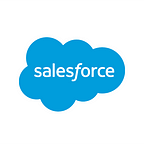How to Jumpstart Customer Service at Your Small Business
by Laura Norman
Running a small business isn’t for the faint of heart. There’s so much to think about — from product design and shipping to payroll and adding toner to the printer — that getting customer service up and running may seem like something you can put off. Don’t make that mistake! In today’s “era of the customer,” companies compete on the overall customer experience. Even small businesses need to make every customer touchpoint amazing from the start. Luckily there are plenty of apps to help you out, so go ahead: get ahead of the curve by making support a priority, starting now.
How to know when you need a help desk
Startups often begin managing customer service through email. A “support@” email address that’s routed to an email inbox is enough to get a fledgling support process up and running. But sooner or later (and sooner is better!) you’ll need to get a true customer support solution. Here’s why:
Email accounts don’t give you the ability to assign emails to different agents, so you’ll often find that agents will unknowingly work on or respond to the same customer email, sometimes with different responses. This gives customers the impression that your support team is unorganized and there is a lack of communication between agents.
And without workflows and notifications, your support team can’t work as quickly. When your support agents are delayed in their customer response times, it doesn’t go unnoticed. In today’s hyper-connected world, customers expect fast responses to their questions, and they aren’t afraid to be vocal about bad service experiences on those same channels. Not only that, more and more of them are going directly to those channels to ask for help. And although email is still an important communication channel for customers, if your customers are looking for help on social channels, you need to support them there too.
What features to look for in a support solution
So you need help desk software. What next? Most small business don’t have the time — or the budget — for long software deployments or expensive implementation projects. You’ll need an out-of-the-box solution that lets you get started fast, and scale as you grow. There are a few key features that you need to be sure to get:
- Since today’s customers reach out on a variety of channels (and sometimes more than one), it’s essential to have a helpdesk solution with multi-channel support. If you bring together web, email, phone, and social into one agent console, no customers will fall through the cracks, and you can seamlessly manage cases from multiple channels.
- Make sure your helpdesk solution also lets you consolidate all of your support content in one powerful knowledge base. It’s best to have one that can be updated as simply as cutting and pasting content, so your service team can make changes without needing a web designer and everyone has up-to-date information. You also need the ability to share your knowledge information and offer self-service support. For small businesses, this is a cost-effective way to provide 24/7 support for your customers.
- Another key aspect of helpdesk solutions is the ability to get business insights that help you make smarter decisions. When you can easily access information like performance monitoring, C-SAT (customer satisfaction scores), customer health indicators, and customer preferences, your data can drive improvements to almost every aspect of your business. See how your agents are performing, get the data you need to optimize your support team, and track the most requested customer features.
Growing with your helpdesk solution
Rapid-growth is every small business’s dream. But if you aren’t prepared, viral growth is a nightmare! Plan ahead so you have the right solutions in place for busy times. If you integrate your new support solution with your CRM and other systems, it’s easier for everyone to collaborate to help customers and offer amazing experiences.
Analyst firm Gartner recently reported that 89% of companies now expect to compete mostly on the basis of customer experience, versus 36% four years ago. So what are you waiting for? Jumpstart your customer service today!
